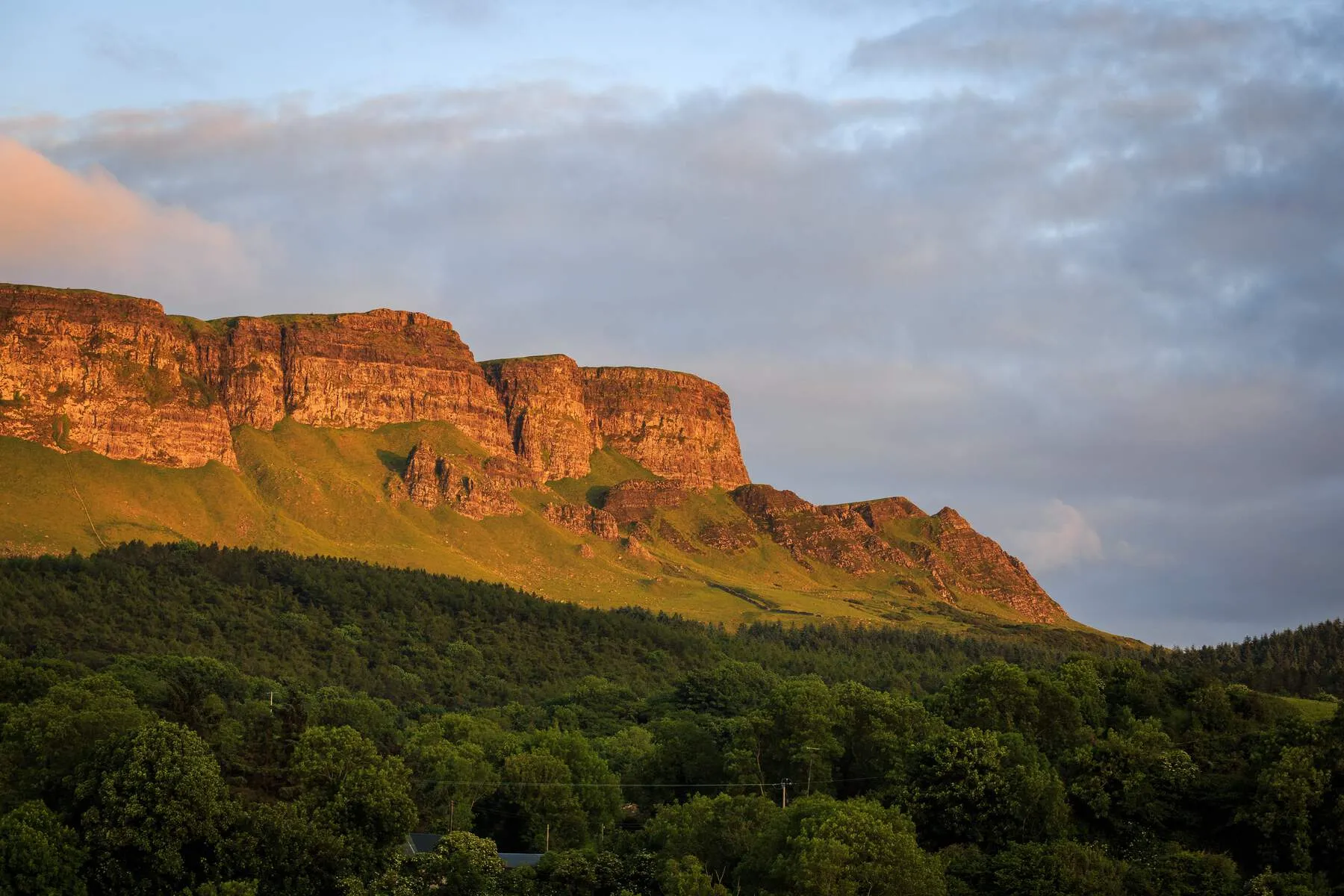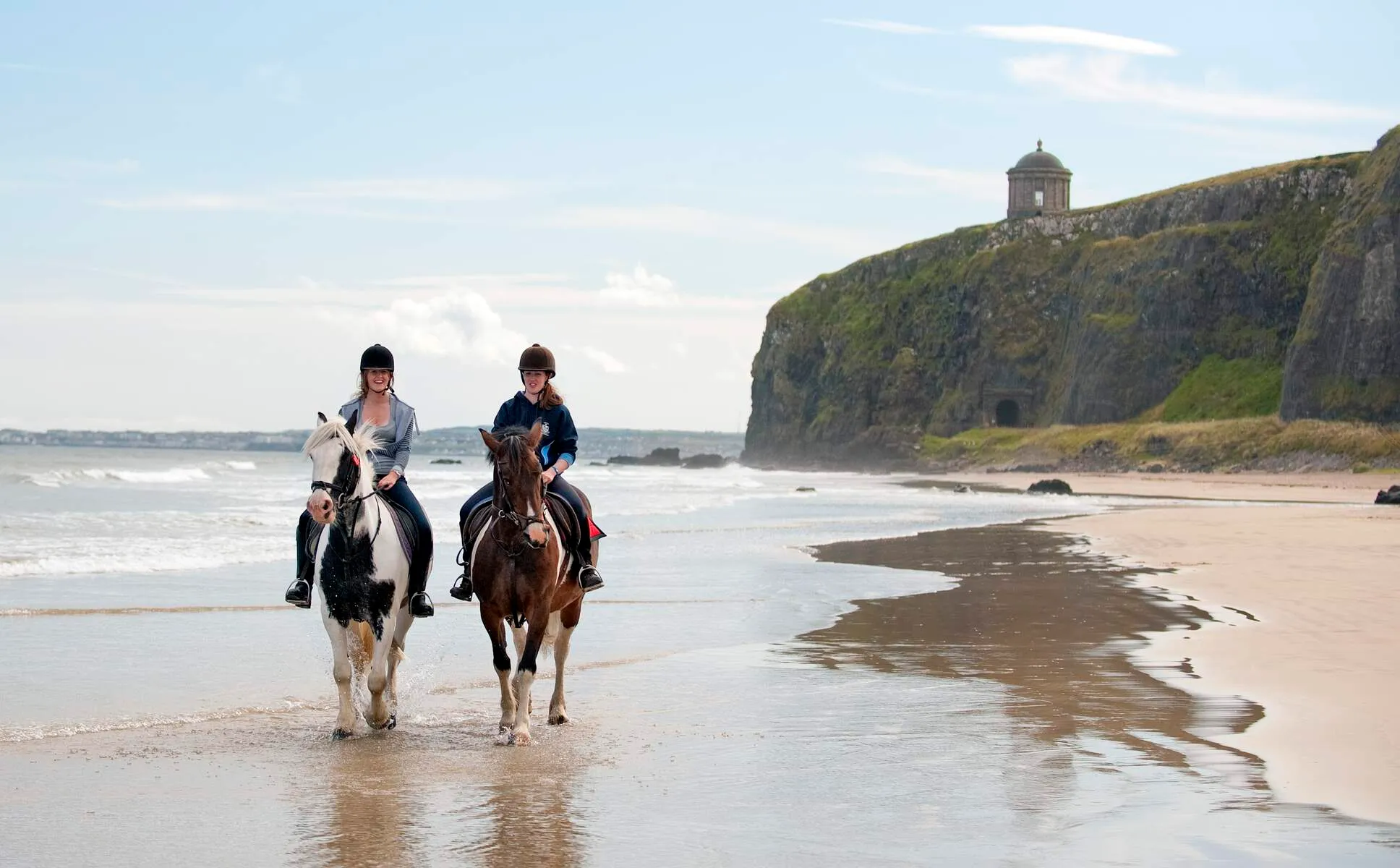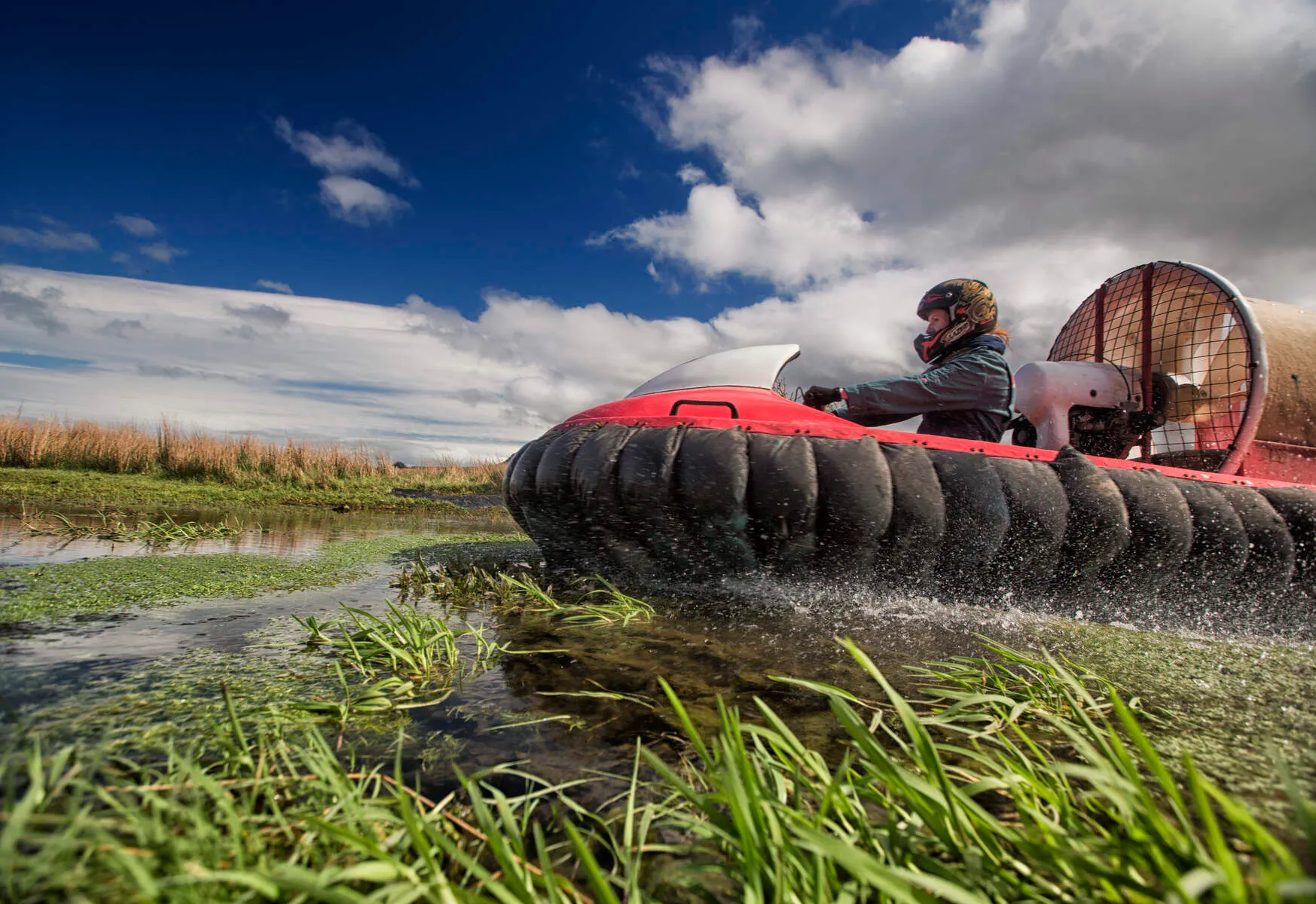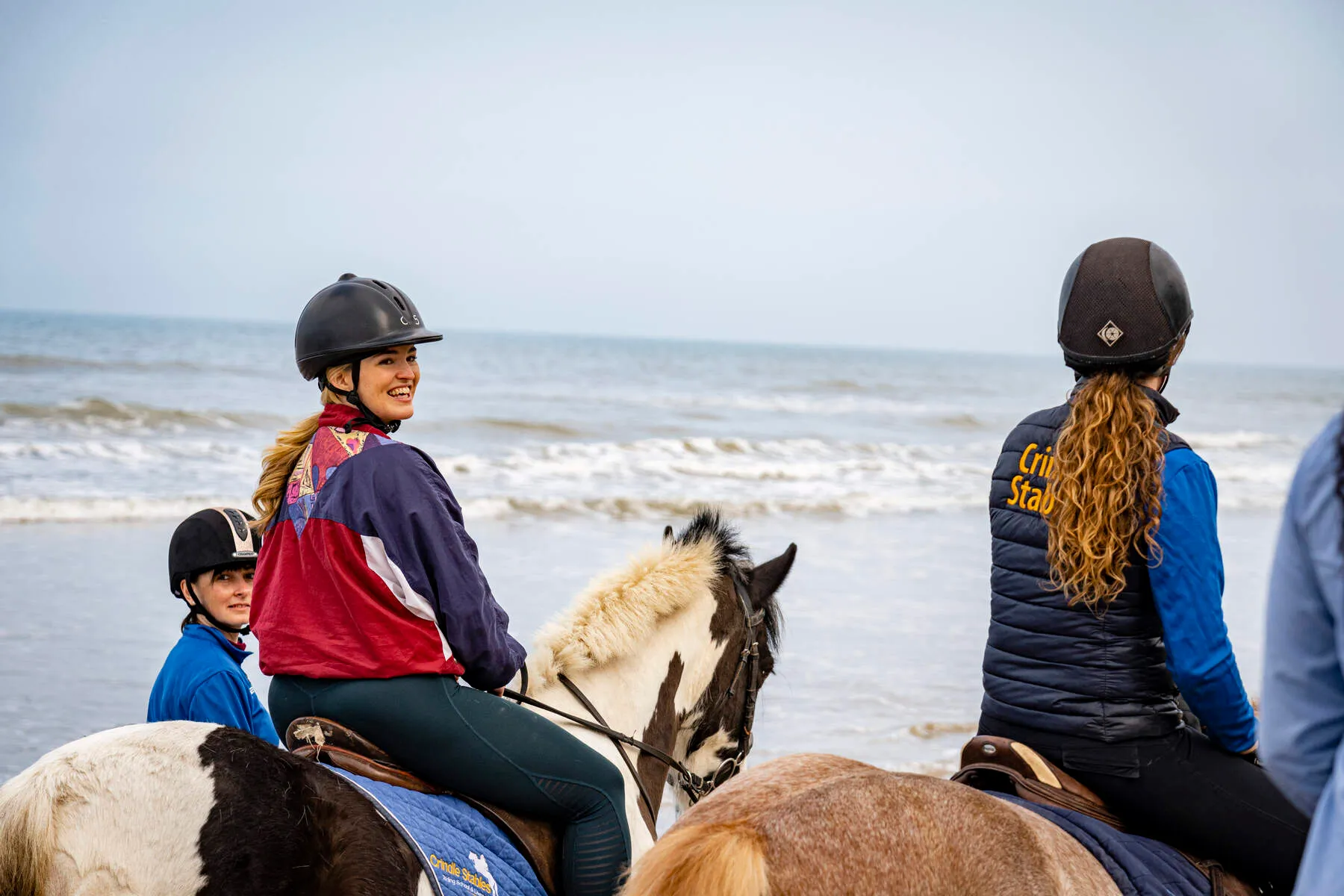Limavady's name tells a tale: "Léim an Mhadaidh" means "leap of the dog," inspired by local lore of a heroic hound bounding across a gorge to warn villagers of danger. This small town in Northern Ireland's County Londonderry wears its history and landscape like a crown, where jagged cliffs of Binevenagh Mountain rise dramatically beside the gentle River Roe. Tucked between the Sperrin Mountains and Lough Foyle, Limavady balances rugged natural beauty with rich cultural threads - the echoes of "Danny Boy" linger here, penned from a melody first noted by local woman Jane Ross, while Celtic myths shape the bronze sculptures scattered along trails. Wander Market Street's boutique shops, savor meals at award-winning pubs serving fresh seafood, or trace the footsteps of New Zealand's only Ulster-born prime minister, William Massey, born in a quiet street still bearing his name.
Adventure and art flow through every corner. Scale Binevenagh's slopes for views that kiss Scotland's skies, then let your spirit soar with hang-gliding or hovercrafting at the Limitless Adventure Centre. Lose yourself in Roe Valley Country Park's ancient woodlands, where O'Cahan's Rock whispers of chieftains and the Broighter Gold hoard's glittering secrets wait in the Arts & Cultural Centre. By day, families bike past fields of wildflowers; by night, jazz notes float over the Danny Boy Festival crowds. Whether you're tracing mythical sculptures or staying at a spa retreat beside Benone Strand's seven-mile sands, Limavady wraps its stories around you - a place where every turn reveals another layer of magic.
Jump to section:
Things to See and Do

Binevenagh Mountain Walk
A scenic walk offering panoramic views stretching to Scotland. Features hang-gliding, fishing, and bird watching in Northern Ireland's Area of Outstanding Natural Beauty. The summit includes the Manannan Mac Lir sculpture, honoring a Celtic sea god.
Roe Valley Country Park
A 3-mile woodland park along the River Roe with walking trails and wildlife observation. Highlights include O'Cahan's Rock (linked to local legends), remnants of linen industry structures, and proximity to where part of the Broighter Gold hoard was discovered in 1896.
Limavady Sculpture Trail
Showcases mythical sculptures like Cushy Glen (an 18th-century highwayman), Leap of The Dog (commemorating a clan-saving dog's jump), and Finvola. Features the Celtic God Manannan Mac Lir at Binevenagh Mountain and includes Largantea Picnic Site with play areas for family outings.
Roe Valley Arts & Cultural Centre
Showcases Northern Ireland's artistic talent through theater, live music, and exhibitions. Houses a holographic replica of the Broighter Gold treasure in Limavady's historic Alexander Memorial Hall (1872).

Benone Strand
A seven-mile sandy beach with views of Binevenagh Mountain. Adjacent Benone Tourist Complex offers surfing, blokarting, and watersports activities.
Jane Ross's House
The Main Street home where Jane Ross transcribed the melody later used for 'Danny Boy.' Celebrates Limavady's musical heritage with cultural exhibits.
Limavady Heritage Centre
A museum exploring the town's history, culture, and evolution through artifacts and interactive exhibits.

Limitless Adventure Centre
Offers hovercrafting, archery, zip lines, and football golf in a rural setting near the River Foyle. Open seasonally with guided bookings.

Crindle Stables
Guided horseback riding tours through Limavady's scenic countryside, suitable for all ages and skill levels.
Danny Boy Jazz & Blues Festival
Annual music festival attracting international artists to celebrate Limavady's cultural roots, including the 'Danny Boy' legacy.
Sperrin Mountains Walking Festival
Held in June, this event offers guided hikes through stunning Sperrin Mountain landscapes, often near Limavady.
William Massey Birthplace
Birthplace of William Massey, New Zealand's 19th Prime Minister, located on Irish Green Street in Limavady.
Getting There
Air
The nearest airport is City of Derry Airport, approximately 15 miles from Limavady. Other nearby airports include:
-
Belfast International Airport - 37.92 miles
-
George Best Belfast City Airport - 50.38 miles From City of Derry Airport, you can take a taxi or rent a car to get to Limavady.
Rail
The nearest railway station is Derry-Londonderry, approximately 0.8 miles from Limavady Road. You can also use Bellarena railway station, which has direct trains to:
-
Derry~Londonderry
-
Castlerock
-
Coleraine (for stations to Portrush)
-
Belfast Lanyon Place and Belfast Grand Central Approximate travel times from major cities:
-
From Belfast: around 2 hours by train
-
From Derry-Londonderry: around 10-15 minutes by train
Road
Limavady is located near the A2 road between Derry and Coleraine. A road bypass was completed in 2003 to reduce travel time on this route. You can use a mapping service like Google Maps to get directions from your starting location. Approximate travel times from major cities:
-
From Belfast: around 1.5-2 hours by car
-
From Derry-Londonderry: around 20-30 minutes by car
Bus
Bus services are provided by Ulsterbus, which operates in the area and can be used to plan your journey to Limavady. You can use the Translink website to plan your route. Approximate travel times from major cities:
-
From Belfast: around 2-3 hours by bus
-
From Derry-Londonderry: around 30-40 minutes by bus
Events & Festivals 2025
There are currently no events listed. If you would like to add an event, please contact us.
History
Limavady's history dates back thousands of years, with the earliest settlers arriving in Ireland during the Mesolithic period. Mount Sandel, near Coleraine, is the oldest settlement site in the North of Ireland, dating back to around 7000 BC. The area was later inhabited by the O'Cahans, a Gaelic Irish clan who ruled over Limavady until the 17th century.
In 1608, King James VI and I granted a licence to Sir Thomas Phillips to distill whiskey in the area, marking the beginning of Limavady's long tradition with distillation. The town of Limavady was founded by Sir Thomas Phillips in 1613, who laid out the town in a cruciform road pattern. The town developed from a small Plantation settlement and had an early association with the linen and Irish whiskey industries.
The 17th century was a time of change and difficulty for the area, with the town being burned twice, once after the 1641 rebellion and again in 1689 during the Williamite War. Despite this, the town continued to grow, with the establishment of a Methodist Preaching House in 1773 and the development of the linen industry in the late 18th century.
The Broighter Hoard, a collection of gold artefacts dating back to the first century BC, was discovered in 1896 near Limavady. The hoard is now housed in the National Museum of Ireland in Dublin, but a holographic reproduction can be found in the Roe Valley Arts and Culture Centre.
In the 19th century, Limavady experienced significant economic growth, with the introduction of piped water in 1848 and gas lighting in 1852. The town also became an important centre for education, with the establishment of several schools and the introduction of the National Education system in 1831.
During World War II, Limavady played a strategic role, with American, British, and Canadian forces stationed in the area to protect the North coast from German U-boats. The town's airfields at Aghanloo and Ballykelly were used as bases for air patrols over the Atlantic.
Today, visitors to Limavady can explore the town's rich history and heritage by visiting the Roe Valley Country Park, which features a museum and countryside centre showcasing the area's industrial and natural heritage. The park also includes several restored water mills used in linen production and a beautiful wooded area along the River Roe.